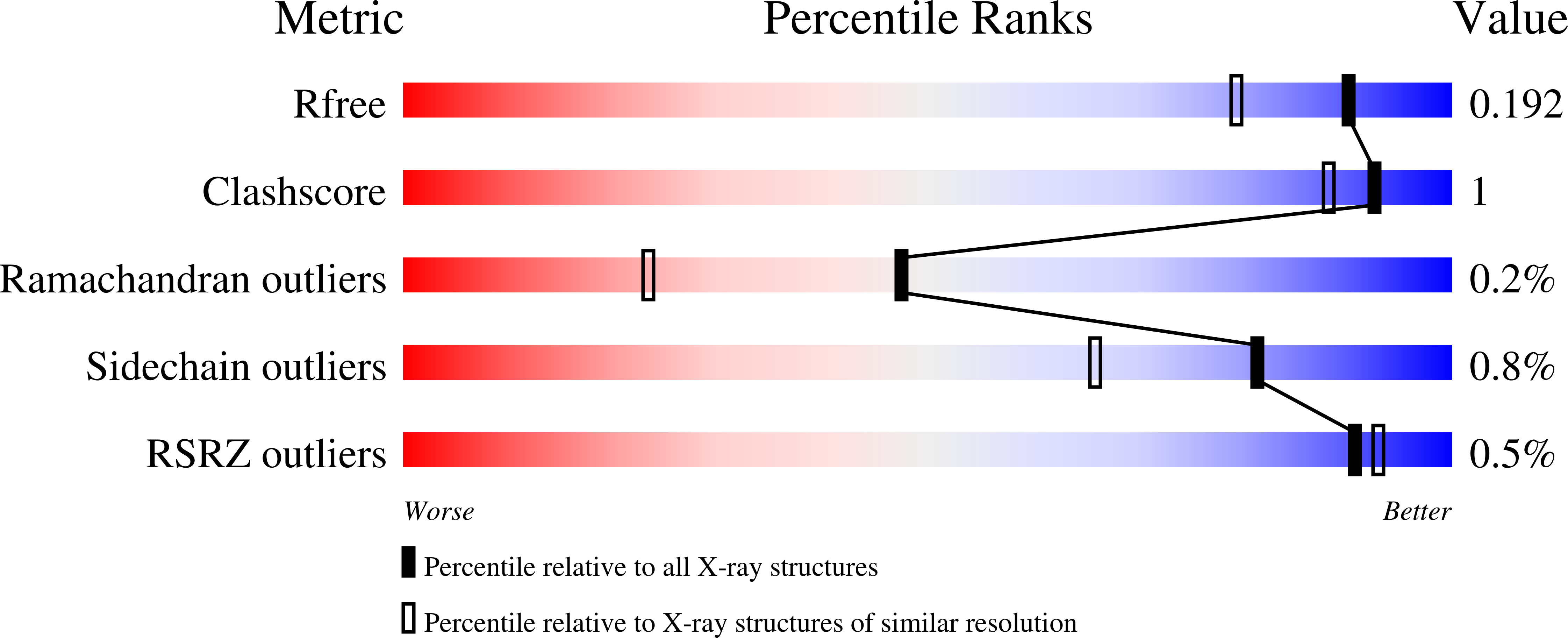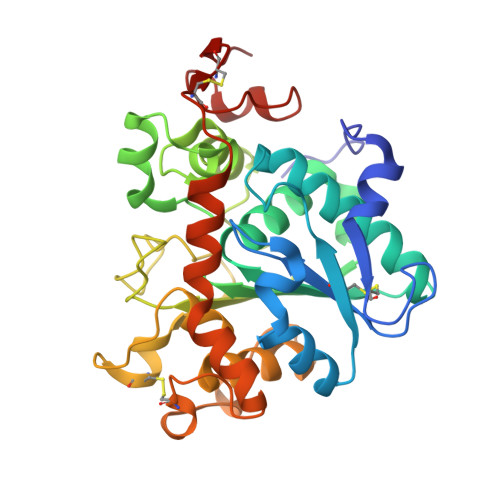Principles of lipid-enzyme interactions in the limbus region of the catalytic site of Candida antarctica Lipase B.
Silvestrini, L., Cianci, M.(2020) Int J Biol Macromol 158: 358-363
- PubMed: 32380114
- DOI: https://doi.org/10.1016/j.ijbiomac.2020.04.061
- Primary Citation of Related Structures:
6TP8 - PubMed Abstract:
Lipases (E.C. 3.1.1.3) are ubiquitous hydrolases for the carboxyl ester bond of water-insoluble substrates such as triacylglycerols and phospholipids. Candida antarctica Lipase B (CALB) acts in aqueous as well as in low-water media, thus being of considerable biochemical significance with high interest also for its industrial applications. The hydrolysis reaction follows a two-step mechanism, or 'interfacial activation', with adsorption of the enzyme to a heterogeneous interface and subsequent enhancement of the lipolytic activity. Once positioned within the catalytic triad, substrates are then hydrolysed, and products released. However, the intermediate steps of substrate transfer from the lipidic-aqueous phase to the enzyme surface and then down to the catalytic site are still unclear. By inhibiting CALB with ethyl phosphonate and incubating with glyceryl tributyrate (2,3-di(butanoyloxy)propyl butanoate), the crystal structure of the lipid-enzyme complex, at 1.55?? resolution, shows the tributyrin in the limbus region of active site. The substrate is found 10?? above the catalytic Ser, with the glycerol backbone pre-aligned for further processing by key interactions via an extended water network with ¦Á-helix10 and ¦Á-helix5. The findings offer new elements to elucidate the mechanism of substrate recognition, transfer and catalysis of Candida antarctica Lipase B (CALB) and lipases in general.
Organizational Affiliation:
Department of Agricultural, Food and Environmental Sciences, Universit¨¤ Politecnica delle Marche, Via Brecce Bianche, 60131 Ancona, Italy.



















